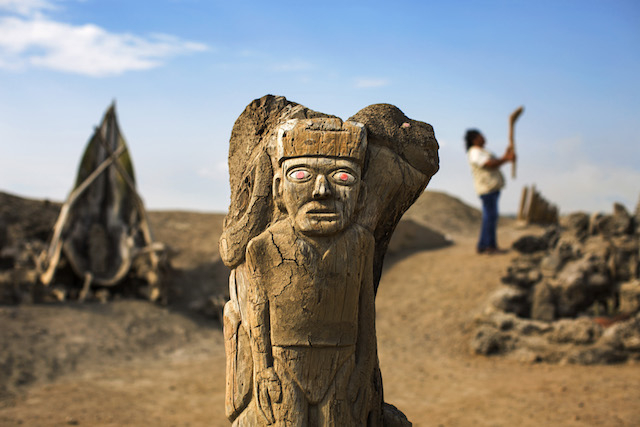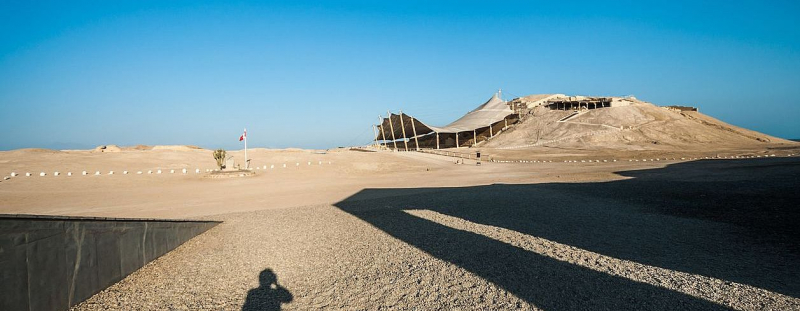El Brujo
El Brujo was a Moche (early Chimu) village in Peru that existed from 100 to 700 AD. El Brjuo is most known for its three "huacas," or sacred pyramid temples, which are now archaeological sites.
Huaca Cao Viejo (also known as Huaca Blanca) is the best preserved of El Brujo's triad of temples, which are supposed to have acted as ceremonial locations. The 27-meter-high pyramid is covered with dramatic, vivid friezes depicting a variety of events ranging from mundane activities like fishing to violent portrayals, including human sacrifice.
The presence of these friezes has led archaeologists to think that El Brjuo was most likely the scene of prisoner torture and execution. The burial of a woman known as the Señora de Cao, who was buried with a variety of valuable artifacts, added to this theory. This find in 2005 was one of the most significant in Peruvian archaeology because it contradicted long-held notions that the Moche – and other pre-Columbian societies – were ruled by men.
The second most notable structure discovered is Huaca El Brujo, also known as the 'Incision Ruin' because to a deep cut in its facade created by treasure hunters. This Huaca is thought to have served as an administrative center.
The last Huaca is Huaca Prieta, which is the area's oldest settlement: archaeologists have researched it extensively, and in all honesty, archaeologists are far more interested in it than regular visitors.
The site is impressive, and the new museum next door, Museo de Cao, is a nice bonus. It houses the Señora de Cao's mummified remains, as well as several of the artifacts unearthed beside her. There's also CGI recreations of how she would have appeared.
Location: La Libertad Province, Peru












